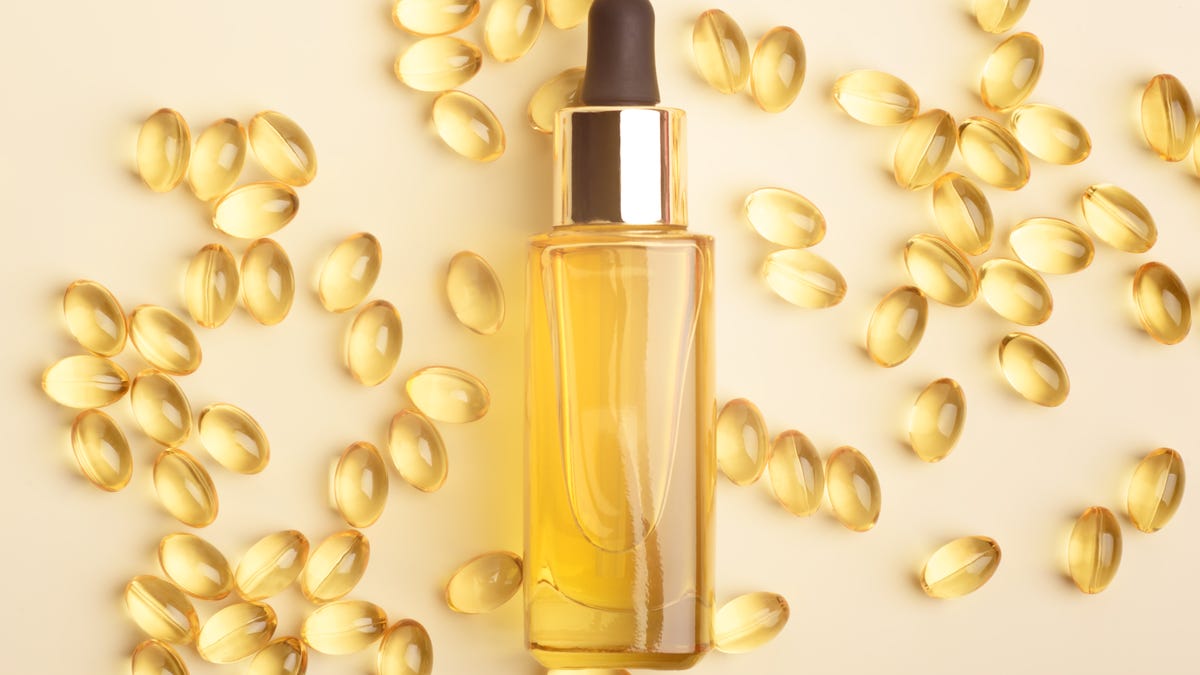How Vitamin E Can Improve Your Skin
Adding vitamin E oil to your skin care routine can bring many benefits. Here is how use it.

Skincare is about looking and feeling your best. Sure, we all want to keep a youthful glow, but the right skincare now can spare you from various skin-related issues down the road like dry skin and skin cancer.
If you've spent any time in the skincare aisle, you've probably noticed the number of products and their variety of ingredients. It can be hard to know which will work for you, but some of the best products for your skin are the most simple. Thanks to natural products like vitamin E, good skincare doesn't have to be complicated.
Read more: Best Vitamins for Hair, Skin and Nails
What is vitamin E?
Vitamin E is a fat-soluble antioxidant that protects cells from damage caused by free radicals. It occurs naturally in some foods and is also available as a supplement. Foods highest in vitamin E are:
- Almonds
- Asparagus
- Avocado
- Beet greens
- Collard greens
- Mango
- Peanuts or peanut butter
- Pumpkin
- Red bell pepper
- Soybean oil
- Spinach
- Sunflower seeds or sunflower oil
- Wheat germ oil
For purposes of skincare, it can also be applied topically on the skin as an oil.
Read more: What Are Vitamins and Why Are They Important?
Potential benefits of vitamin E
In addition to its inflammation-fighting antioxidants, vitamin E is a great moisturizer. Here are some of the potential benefits of using vitamin E oil for skin.
Helps skin retain moisture
Vitamin E is commonly found in facial and body lotions due to its moisturizing properties. Vitamin E strengthens the skin's moisture barrier, allowing you to retain moisture in the skin for longer. The increased moisture in the skin also gives it a softer and more youthful texture, reducing the appearance of fine lines and wrinkles.
May help wound healing and reduce scarring
Studies show that vitamin E can promote the healing of cuts, burns and other skin abrasions. Speak with your physician before using vitamin E on wounds.
Fights skin damage
The powerful antioxidant properties of vitamin E make it great for fighting skin damage caused by the sun and other environmental factors. Skincare professionals believe that products containing vitamin E and vitamin C together are even more effective at reducing skin damage.
Reduces eczema symptoms
Some studies have shown that symptoms of eczema are improved by the topical use of vitamin E oil. This can include improvements in itching and the flaking associated with eczema dryness, especially when used with other moisturizers.
Promotes healthy nails
As a moisturizer, vitamin E can be great for the nails, cuticles and skin surrounding the nail bed. All of these things help to improve or prevent yellow nail syndrome. As an antioxidant, it can help to protect the nails from free radical damage.
Read more: Are Hair Growth Vitamins Worth the Money?
How to apply vitamin E oil
You can buy vitamin E oil in almost any grocery store, pharmacy or beauty supply store. But once you get it home, be sure to do a patch test before you start oiling up. Here is how to apply vitamin E oil.
1. Do a skin patch test on the area of your body you plan to use the oil. This involves selecting a small area of skin to apply the oil to assess your reaction for 24 to 48 hours before applying it to more areas. If you are applying it to your face and have sensitive skin, you may need to add a gentle carrier oil, like coconut oil, almond oil or jojoba oil.
2. Whether in a carrier oil or by itself, apply the oil to the intended areas.
3. If you already have oily skin, plan to wash the oil off with a gentle cleanser. If not, you can leave the oil on.
4. Adding the oil to other moisturizers can make wider spread use easier and more efficient.
5. Do not apply the oil to sensitive areas like the eyes, genitals or internally.
Vitamin E considerations
As with any product you plan to apply to your skin, it is best to start with caution and consider all the risks. The good news is that there are few risks to consider with vitamin E oil instead of vitamin E oral supplements. The main concern with topical vitamin E is skin rash or allergic reaction.
A vitamin E allergic reaction may present as a rash, swelling, itching, hives, or swelling. If a serious reaction occurs, consider seeking medical treatment.
Fortunately, for many, there are no negative side effects of using vitamin E oil for skincare. The potential benefits outweigh the potential risks. Consider adding vitamin E oil to your skin care regimen if you're looking for an overall healthier complexion.

